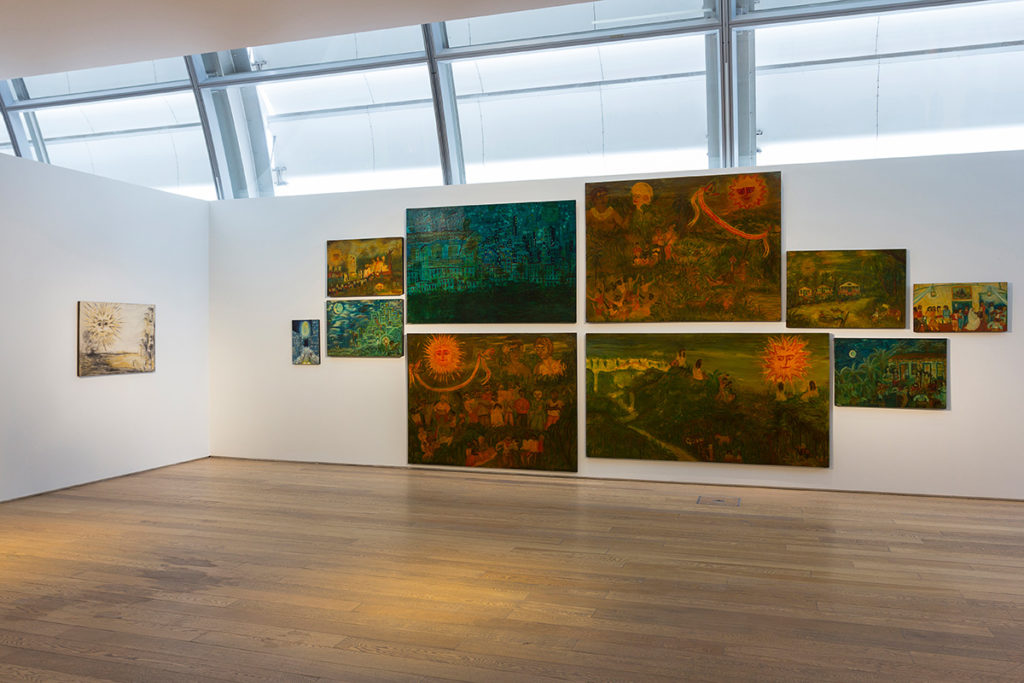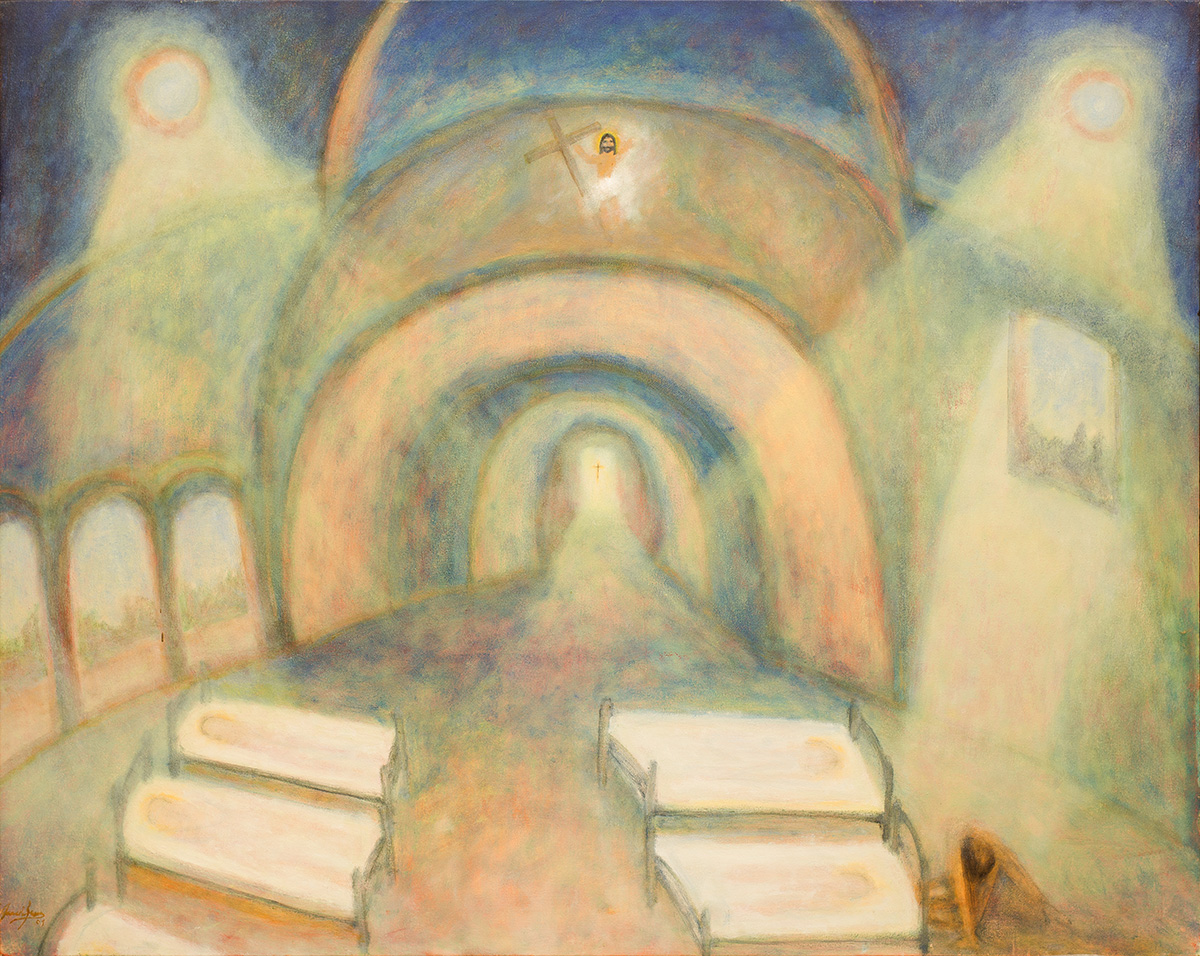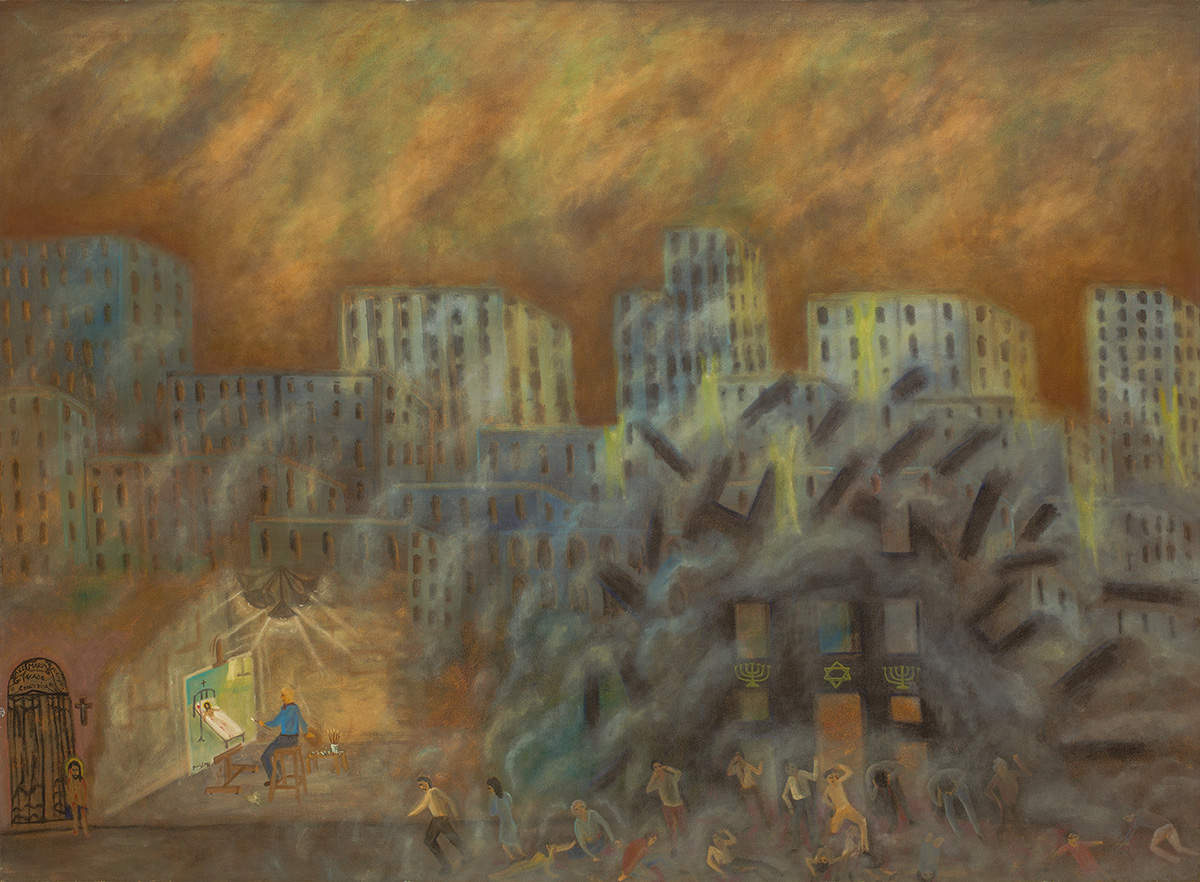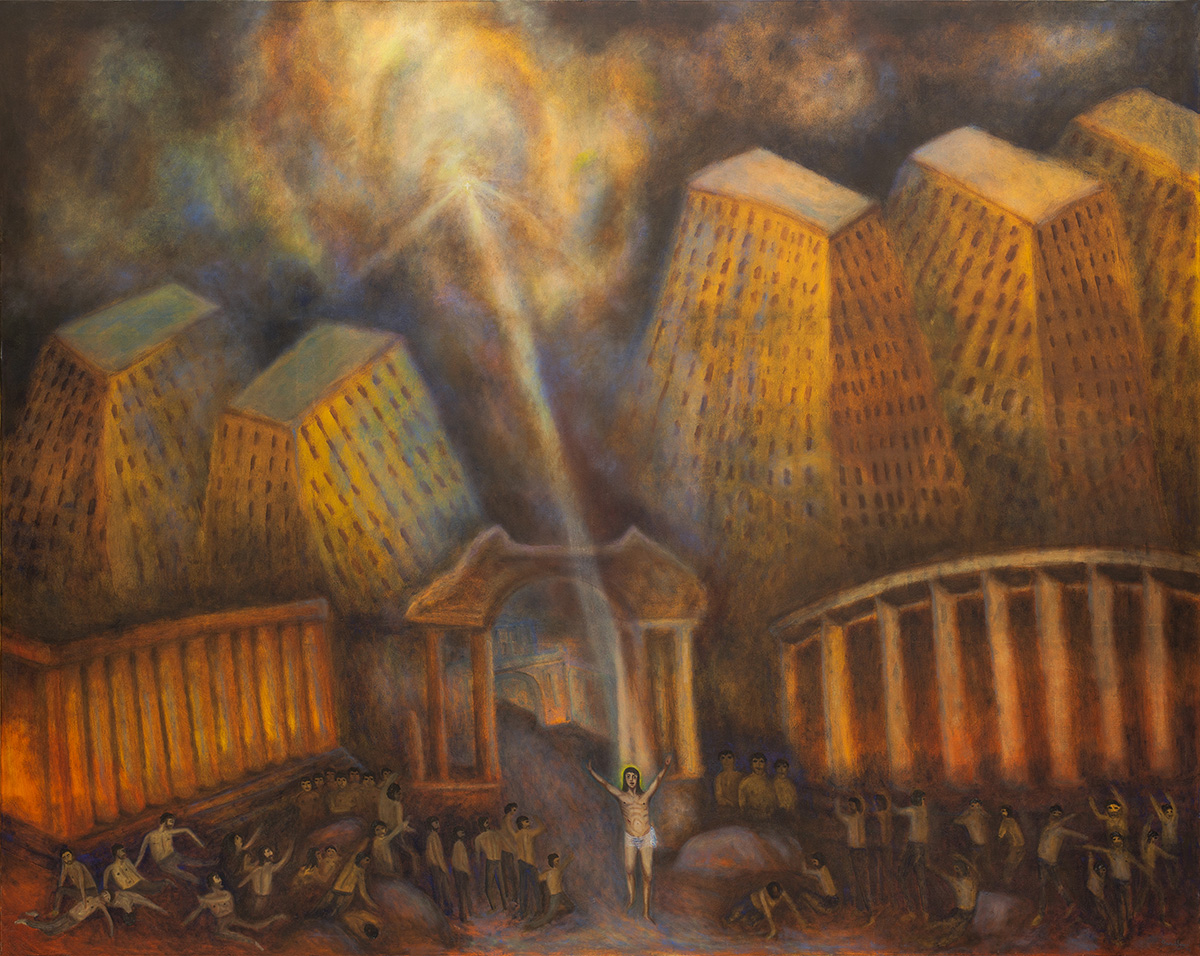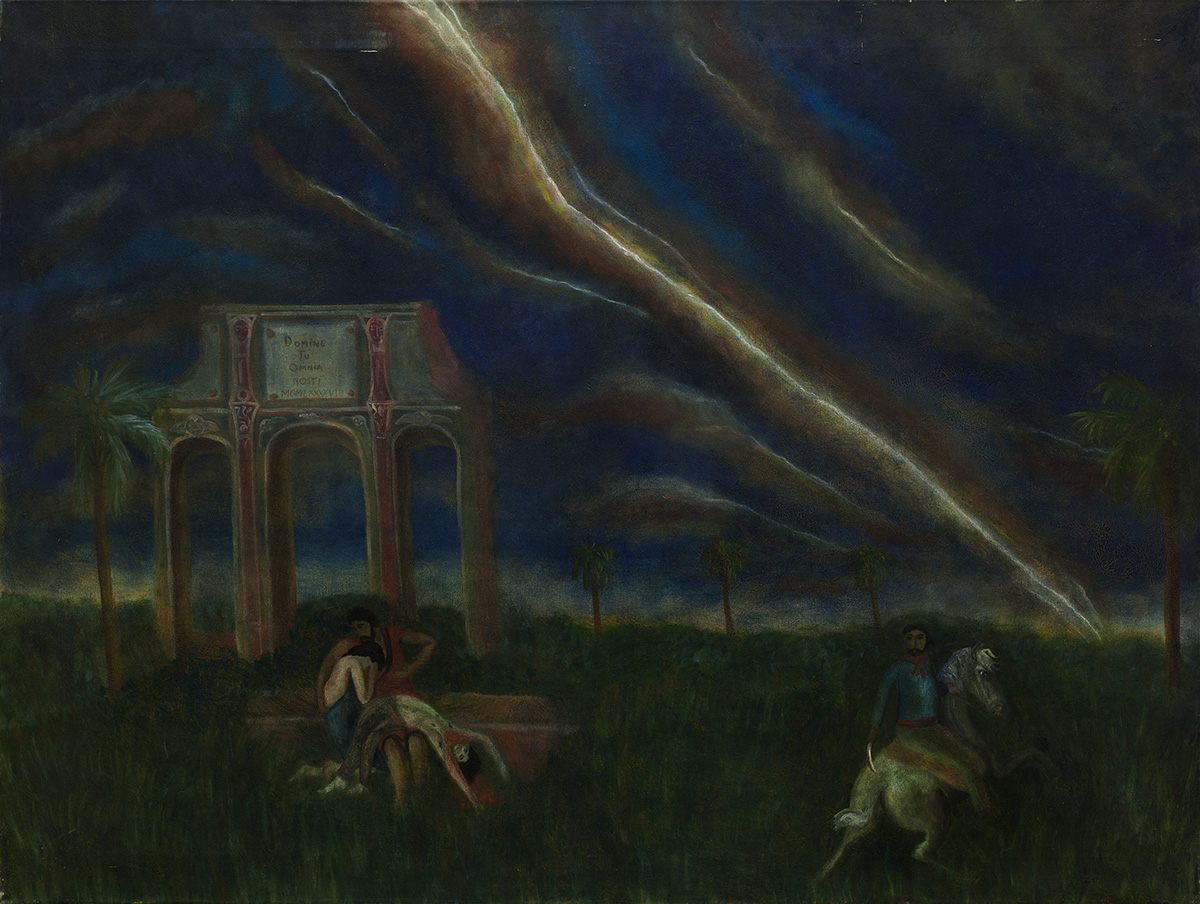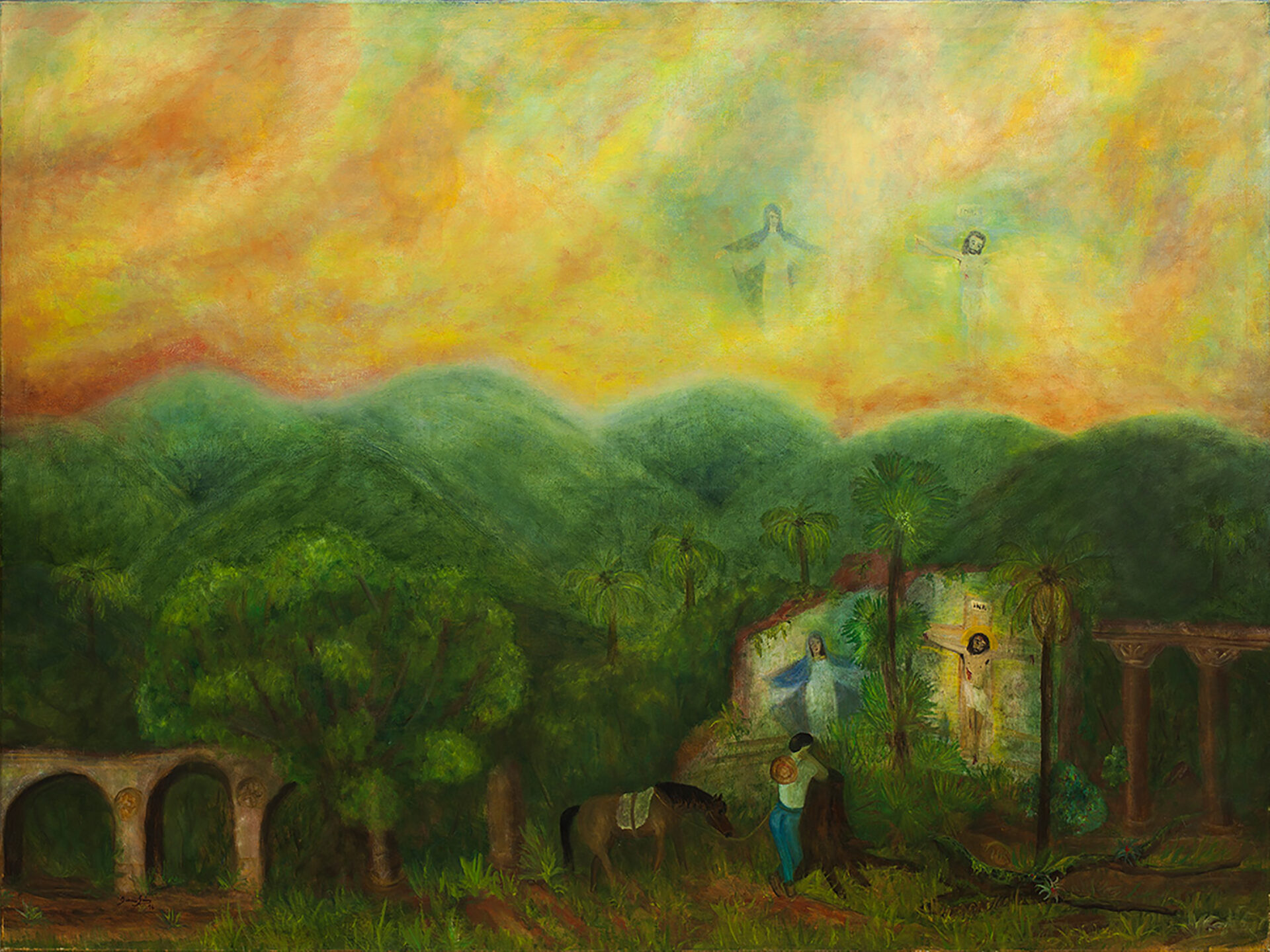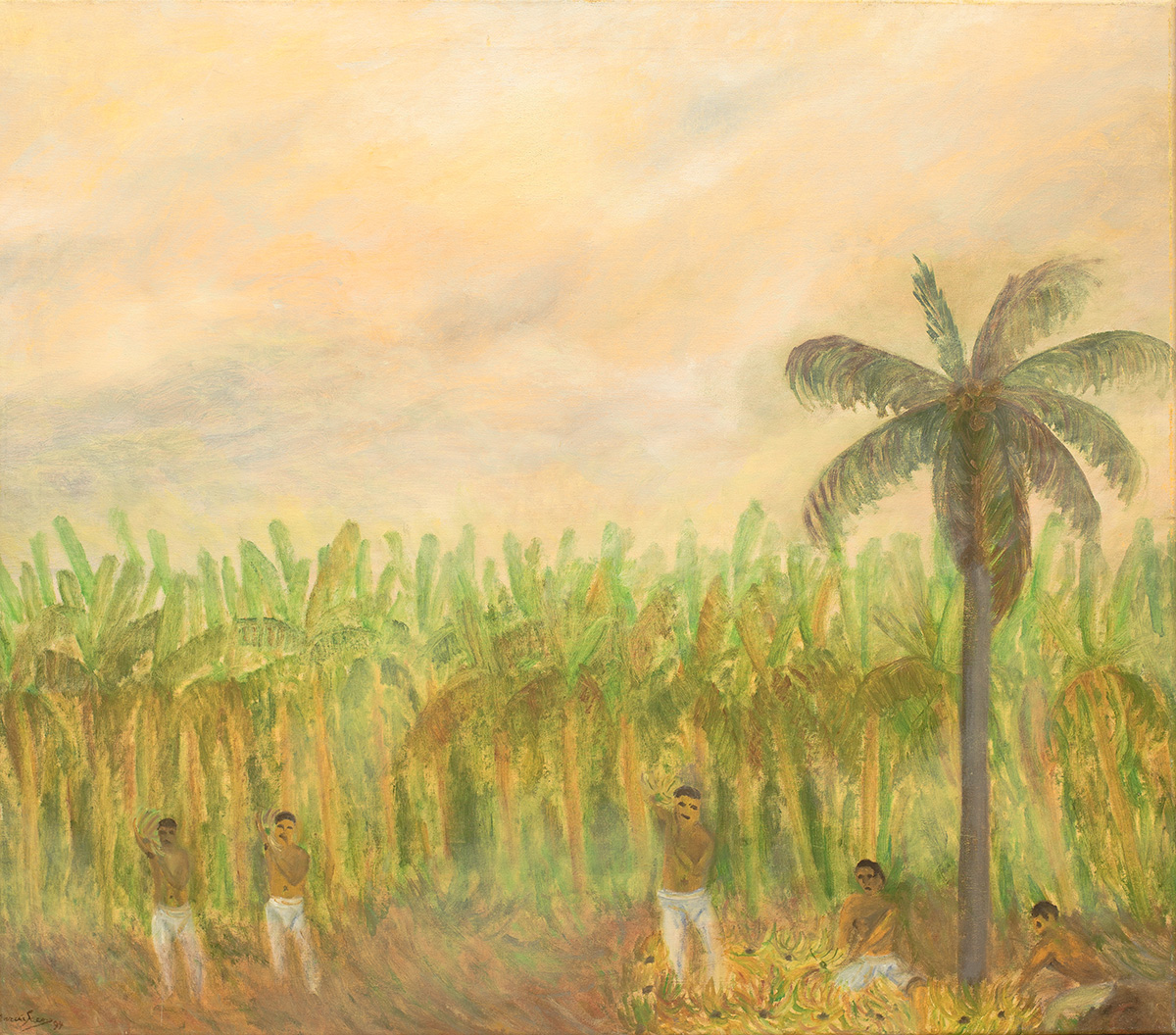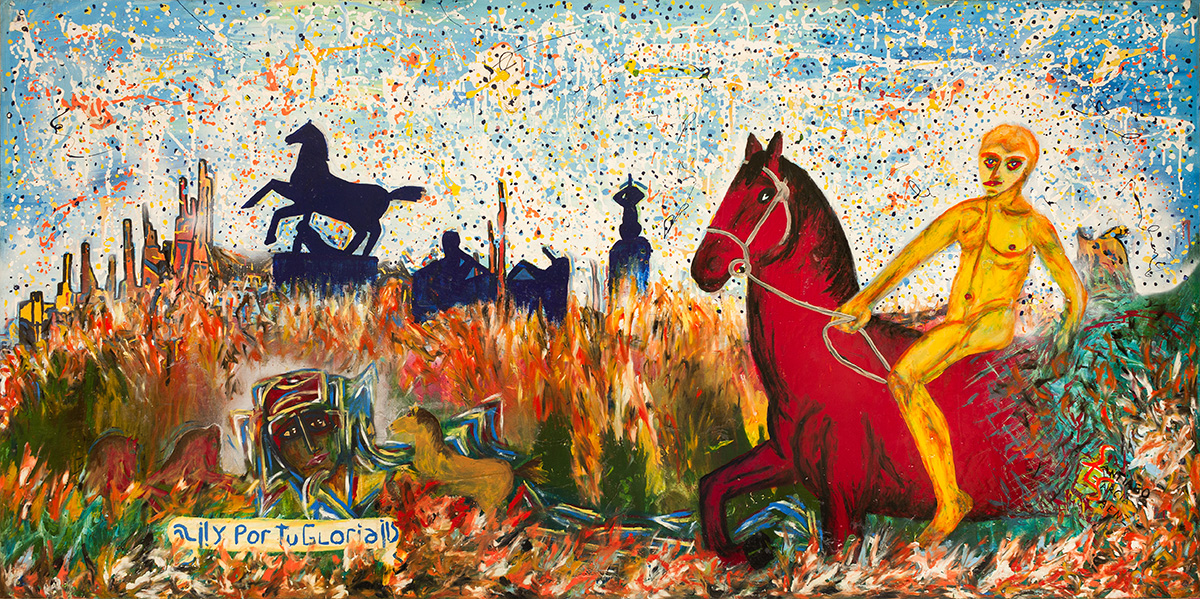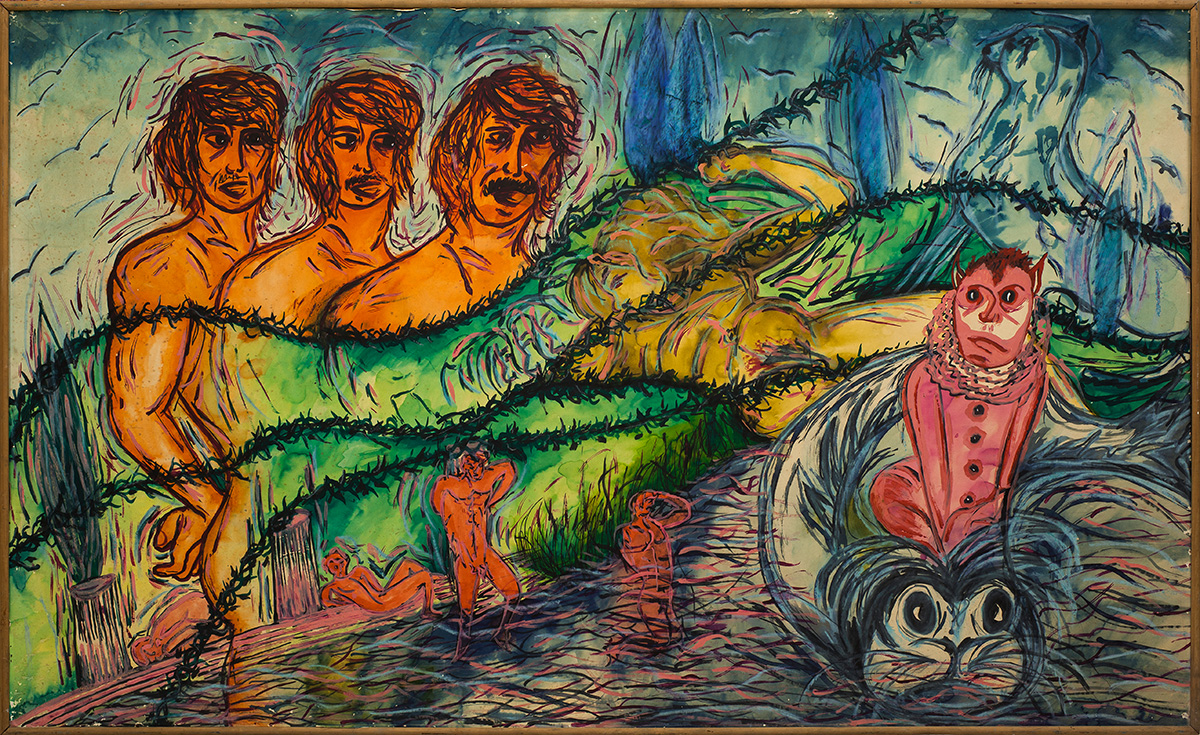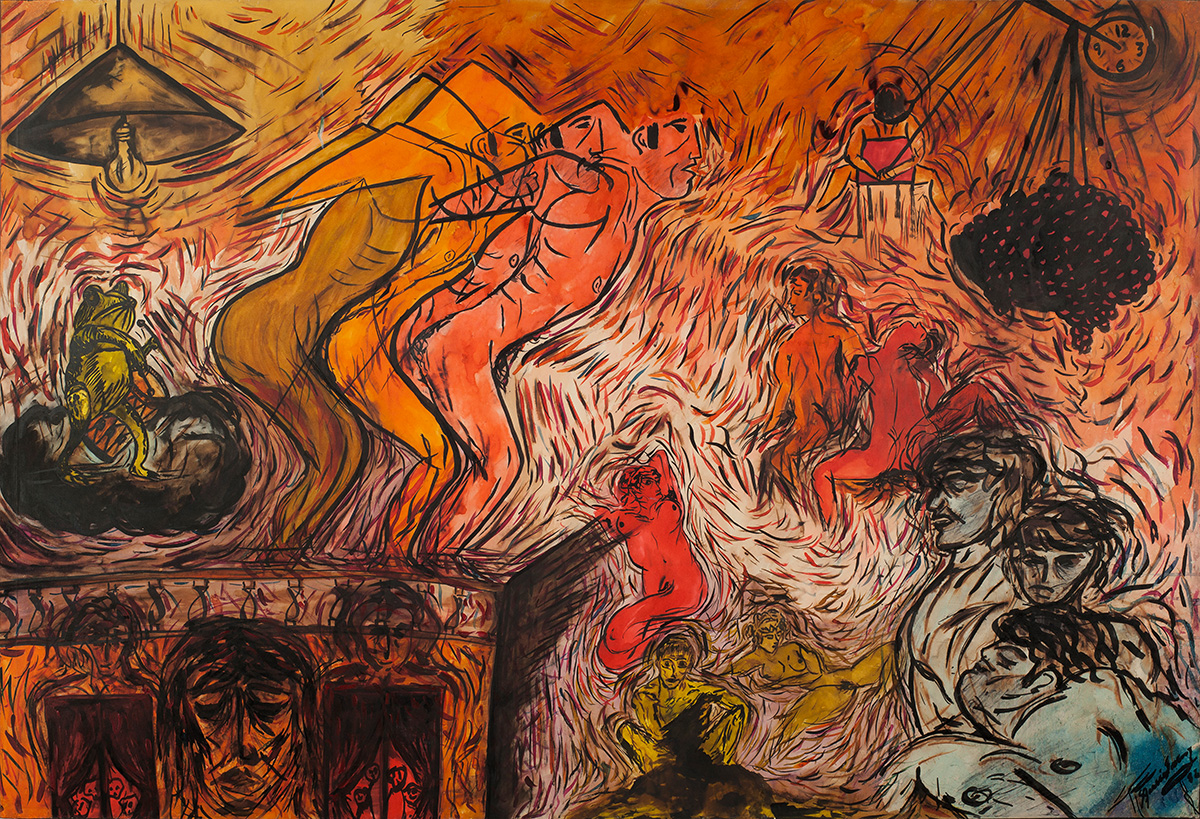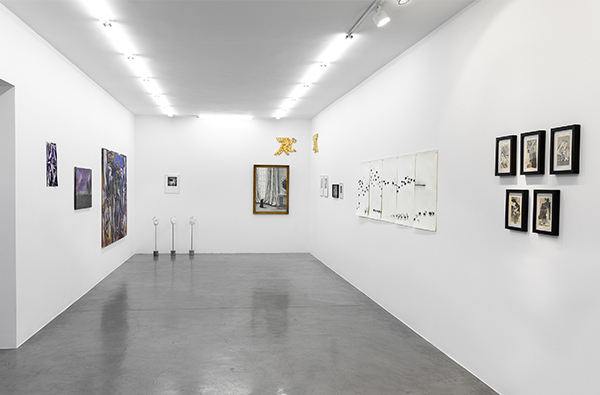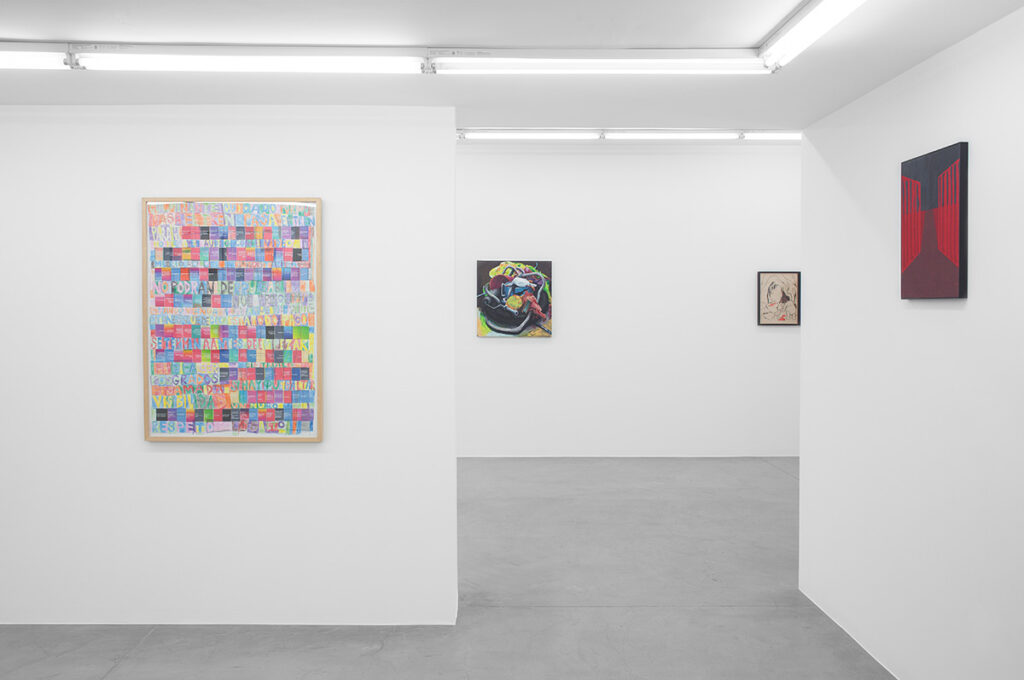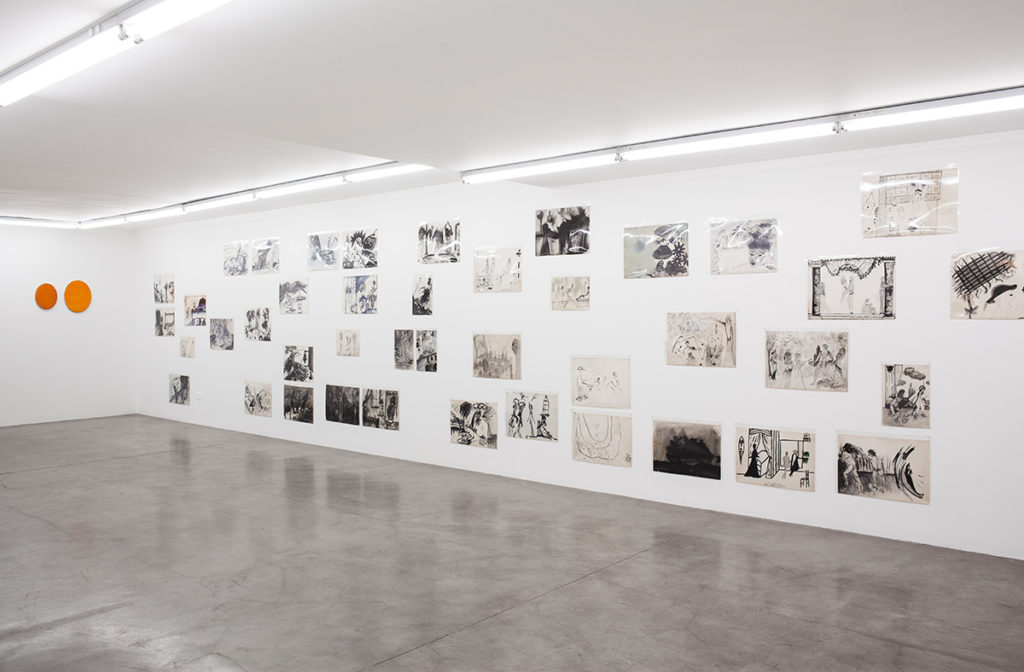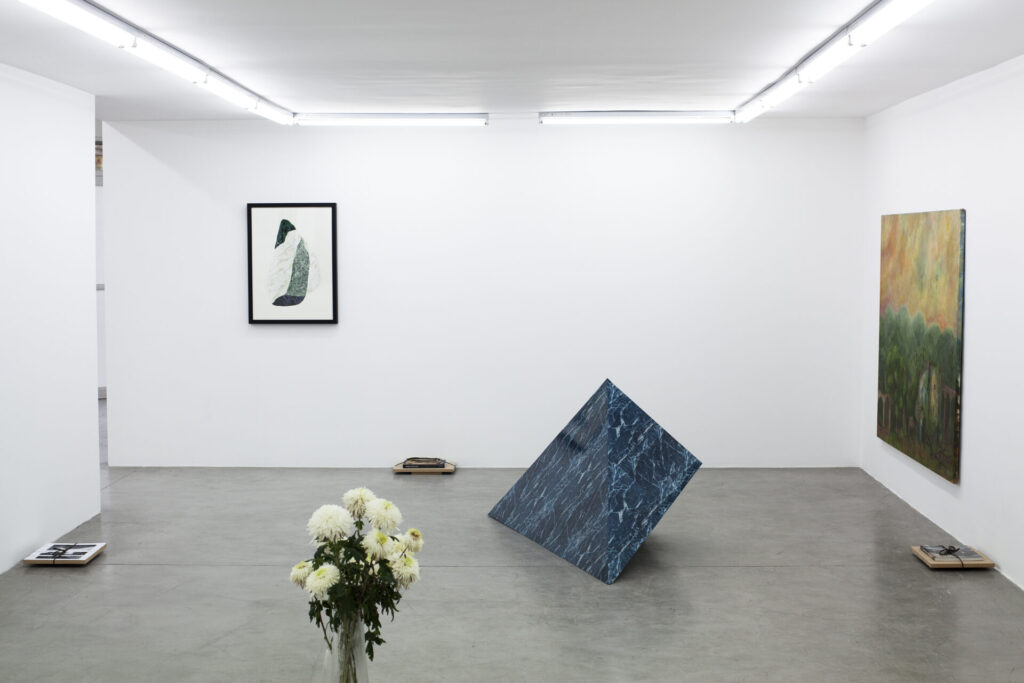SANTIAGO GARCÍA SÁENZ
Santiago García Sáenz (1955–2006) was born in Buenos Aires, where he would live until the time of his death. In the nineteen-seventies, he studied painting in the studios of artists David Heynemann and José Manuel Moraña. He enrolled briefly in architecture school. His first shows were held at the celebrated Van Riel gallery (1976) and Lirolay gallery (1977). Later, he worked with the gallery run by Christel Kuker1, with whom he shared studio space. It was through the decidedly figurative work he showed at that gallery that he found a place for himself on the local art scene. He worked for Ruth Benzacar in the eighties, during the period when her gallery would become a pivotal venue on the Buenos Aires art scene. The work he exhibited at that gallery on two occasions bore the influence of Luis Felipe Noé’s informalist painting, but also of contemporary artists like Duilio Pierri and Marcia Schvartz.
In the mid-eighties, he began developing a very personal style that set him apart from the studios where he had studied. He reconnected with the Catholic faith of his childhood and traveled around Argentina and greater Latin America. He produced a series of murals for public spaces: Mundus Criollo (1985) was commissioned by Subterráneos de Buenos Aires for the Peru subway station; a large mural for the Praia de Geriba, Buzios, Brazil (1986); Mural del Club Social y Deportivo Mechongué (1986); and the Via Crucis for Santa Cecilia church in Castelar, Argentina (1987). Along with this spiritual reawakening came greater and greater interest in Native American cultures and Americanist traditions. In 1984, he began work on the series Te estoy buscando América [I Am Looking for You, America]—a project he would pursue through 1992 and show a number of times at the Centro Cultural Recoleta. After traveling in northwestern Argentina and Bolivia, he and Liliana Maresca (1951–1994, Buenos Aires), a close personal friend, held a joint show at Galería Centoira (1990). He traveled to Paraguay often. He participated in a spiritual retreat in Tüpasy María, a Benedictine monastery. In 1991, the show Pinturas was held at the Museo del Barro in Asunción, Paraguay. That same year, he took part in the event La Conquista. 500 años. 40 artistas, at the Centro Cultural Recoleta. Over the course of the nineties, his work was shown at venues such as the Museo de Arte Decorativo (1992), the Museo de Arte Hispanoamericano Isaac Fernández Blanco (1995), the Museo de Bellas Artes de Salta (1995), and the Centro Cultural “Eugenio Flavio Virla” in Tucumán. His painting was exhibited abroad as well. In 1992, he participated in the VIII Bienal de Arte Iberoamericano in Mexico; in 1996, he showed at the Casa Argentina in Rome, Italy, where he was introduced to Pope John Paul II, to whom he gave the painting “Nuestro Señor de la Paciencia” [Our Lord of Patience]. In 1997, his “El sueño de Jacob” [Jacob’s Dream] was awarded the Fundación Fortabat’s first prize in the young painter’s category.
This period witnessed the height of the HIV/AIDS pandemic in the Argentine art community. Many of SGS’s friends and colleagues perished. Even as he endured moments of great hardship, he kept the fact that he was HIV positive secret. During this period, he produced the celebrated series Cristo en los enfermos [Christ in the Afflicted], which would be exhibited in Buenos Aires and Asunción. His first show at the Centro Cultural Ricardo Rojas2, held in 1998 when the venue was directed by Alfredo Londaibere, featured a series of martyrs conceived as part of Sufriendo la intolerancia [Enduring Intolerance], another major series.
At the dawn of the millennium, he was awarded a prize from the Fondo Nacional de las Artes. He kept traveling. In 2003 and 2004, he returned to the Argentine littoral with its jungles and Jesuit ruins—topics that, by this time, were among the artist’s preferred themes. He exhibited at the cultural center of the Universidad del Nordeste in Resistencia, Chaco province, and at the Museo de Bellas Artes in Corrientes province. Characteristic of his mature phase was a unique imaginary at the intersection of the American baroque and sacred art. In 2005, he published the book “Ángel de la guarda. 50 años de dulce compañía,” an autobiography of sorts featuring much of his pictorial work. The book was presented at the el Museo de Arte Hispanoamericano Isaac Fernández Blanco in the context of a solo show titled Auterretratos. Also in 2005, he took part in a group show at Casa Brandon, LGBTTIQ+ bar and cultural center in Buenos Aires. He also published “No matarás,” a book of psalms printed in the workshops of the Papelera Palermo, where he also showed his work. On March 9, 2005, his last solo show was held at Galería Bacano. On March 30—one day before his fifty-first birthday—he died.
Since then, his work has been exhibited in a number of galleries and institutions in Argentina and at international art fairs, such as ARCO in Madrid in 2017 in the framework of Saber sin mi, curated by Sonia Becce and Mariano Mayer3. That same year, the exhibition Las horas menores at Hache gallery in Buenos Aires was the first to feature his early sketches and drawings. On July 9, 2021, “Quiero ser luz y quedarme,” an anthological exhibition of his work curated by Pablo León de la Barra and Santiago Villanueva, opened at the Colección Amalita – Colección de Arte Amalia Lacroze de Fortabat. A catalogue featuring images of a selection of works and essays on his production will accompany the show.
His work forms part of the collections of institutions such as Solomon R. Guggenheim Museum, New York, USA; Centre Pompidou, París, France; Fundación Federico Jorge Klemm, Buenos Aires, Argentina; MALBA – Museo de Arte Latinoamericano de Buenos Aires, Buenos Aires, Argentina; Colección de Arte Amalia Lacroze de Fortabat, Buenos Aires, Argentina; Museo de Arte Moderno de Buenos Aires, Buenos Aires; Vatican Museums, Collection of Contemporary Art, Vatican City; Museo del Barro, Asunción, Paraguay; Museo Provincial de Bellas Artes “Dr. Juan. R. Vidal,” Corrientes, Argentina; Museo Casa “Arias Rengel,” Salta, Argentina. It is also found in private collections in Argentina, the United States, Paraguay, Brazil, and other countries.
1 Christel K. was an art gallery in operation in Buenos Aires from 1976 to 1990.
2 The gallery at the Centro Cultural Ricardo Rojas, an extension of the Universidad de Buenos Aires, was a key cultural and artistic venue in the nineteen-nineties. Curated, initially, by Gumier Maier, it housed shows by Marcelo Pombo, Omar Schiliro, Feliciano Centurión, Magdalena Jitrik, Fernanda Laguna, and other artists crucial to that generation. Alfredo Londaibere took over as curator in 2002, when Gumier Maier left the post he had held since 1997.
3 In addition to Santiago García Saénz, the show featured work by Carlos Herrera, Eduardo Costa, Marcelo Galindo, Mariana Tellería, Nicanor Aráoz, Paula Castro, Santiago De Paoli, and Osías Yanov. It was held at Tabacalera in the framework of the Programa Argentina Plataforma ARCO Madrid.
workS
Wishing for mercy, 2001
Santiago García Sáenz
Collection Centre Pompidou, Paris, France
Oil on canvas
47.4 x 58.9 in
Martyrs of the Ocean, 2000
Santiago García Sáenz
Collection Solomon R. Guggenheim Museum, New York, United States
Oil on canvas
68.3 x 76.6 in
Suffering intolerance on July 18, 1994. Series Suffering intolerance, 1998
Santiago García Sáenz
Oil on canvas
55.9 x 74.8 in
American Allegory. Series I Am Looking for You, America, 1992
Santiago García Sáenz
Oil and synthetic enamel on hardboard
72 x 48 in
Santiago García Sáenz. I Am Looking for You, America. Series I Am Looking for You, America, 1986
Santiago García Sáenz
Oil and synthetic enamel on hardboard
48 x 96.3 in
EXHIBItIONS
